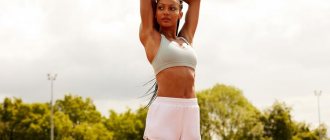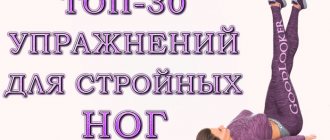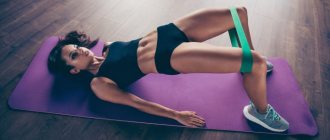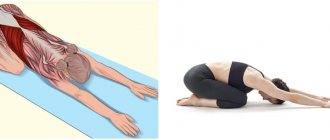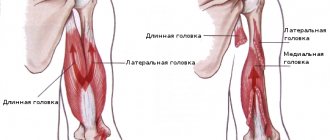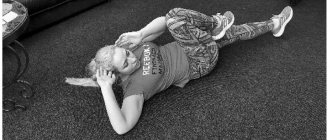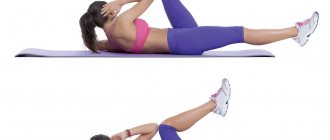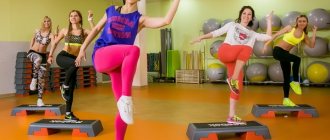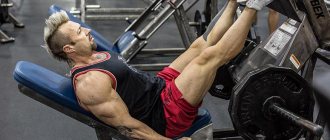Can Pilates help you lose weight and what are its health benefits? We'll walk you through how to get started with Pilates and what movements are best for beginners.
Bonus: Pilates gymnastics for beginners does not require special equipment and is suitable for practicing at home, but in gyms you can find special equipment for more complex complexes.
Strengthening your core muscles is one of the best decisions you can make to improve your overall fitness. A strong core, which includes the abdominal muscles, obliques, and lower back muscles, helps maintain correct posture, balance the muscles and ligaments in the body, improves the health of the spine, and also helps to move more under control. There are many ways to work them, but adding Pilates moves to your routine is a great way to engage your core in new ways. If you want the same body as in the pictures, but before that you only practiced gymnastics or stretching and consider yourself a beginner in the world of fitness, then it’s time to start doing serious sports!
What is it?
"A Pilates circuit is a mind-body workout that targets your core with each exercise," says Manuela Sanchez, a Pilates instructor in Brooklyn, New York.
The deep stabilizer muscles are worked and strengthened through progressive movements using gravity, body weight, and specially designed equipment as forms of resistance. The mind-body connection is critical to Pilates. It trains the mind to maintain a constant level of awareness of body movements, resulting in greater body control and greatly improved technique.
Whether you perform a core-focused exercise or one that targets other muscle groups, your core is always engaged during Pilates. This training method strengthens different areas of your body. “It works the abdominal area, both at a deep and superficial level, so you can achieve true abdominal strength,” says Sanchez. “This means that these movements work a wide range of muscles, from the deep inner transverse abdominals to the abs (that's what we always picture in our heads when we hear the word abs).”
To help you appreciate and reap all the benefits of Pilates, Sanchez has put together some of the best exercises that will focus on your core. All of them are classic, “so all Pilates lovers will recognize them immediately, and people new to this gymnastics / with an initial level of physical fitness. training, will be able to easily master them,” she says. Another plus: none of these exercises require equipment or special equipment, so you can do them almost anywhere: at home, in the gym, on the street.
Crunches
The crunch is a fundamental exercise aimed at developing the rectus abdominis muscle. This is what will help in creating the relief without requiring any additional equipment. However, this exercise will not help you lose weight, and if overloaded, it can cause back pain. There is no need to rush here either.
Photo: istockphoto.com
Technique:
- Lie on your back with your legs bent at a 90-degree angle.
- Place your hands behind the back of your head.
- Raise your shoulders and chest so that your lower back remains on the floor.
- Return to the starting position.
Do the exercise 30 times.
How to pump up your whole body? Circuit training from Lerchek
How to start training
Group classes
There are several ways to do Pilates. It would be a good idea to find group classes that are mostly well structured, easy to follow, and always have an instructor on hand if you need help or advice.
Personal lessons
A more expensive alternative would be to have an instructor teach you one-on-one, perhaps even in your own home. Obviously, the cost of individual training will be higher than group classes. However, if you have specific requirements, such as an injury or you are pregnant, personal training is ideal.
Independent studies
You can find many tutorials and video instructions on the Internet. One of the benefits of using this material is that you can do Pilates at home, on vacation or anywhere. You can study it in your own time by carefully studying the instructions.
Rules for practicing Pilates at home
Pilates at home begins with carefully preparing a theoretical knowledge base: learn to breathe correctly, keep your shoulders down and your stomach tense. It is important to work on the starting positions so that the exercises are as effective as possible.
In any poses, you should only keep your head straight: you should not press your chin to your chest. You also need to take care of the spine, stretching it to expand the space between the discs, and this will prolong the youth and health of the body.
Pilates classes at home should start 3 times a week. If you have free time, you can gradually increase the number of classes to 5 or even 7 times a week. The training duration is 40-50 minutes.
History of Pilates
Pilates is named after the German Joseph Pilates (1912-1967), a man who overcame his childhood weaknesses by developing and practicing his own exercise regimen. According to the Pilates Foundation website, Josef apparently suffered from asthma, rickets and rheumatic fever. In 1912 he worked as a circus performer, boxer and self-defense instructor in Great Britain. After this, he worked with wounded WWI soldiers who were unable to walk due to their injuries. This type of exercise has evolved over the years to become a reliable system for training and rehabilitating the body.
Benefits of Pilates
Full body workout
Pilates at home for beginners is interesting because the body is trained functionally, using muscles in cooperation with each other. This is how our bodies are supposed to work, and the sequences of movements performed can prepare you for the physical demands of everyday life.
Strength of the muscle corset and alignment of posture
Poor posture accounts for various pains experienced by a large percentage of the population. According to the BBC Health website, "4 in 5 adults sometimes experience back pain." If you haven't learned to sit up straight since childhood, then Pilates will definitely help you. It will teach you to consciously maintain optimal anatomical alignment in all body positions as well as during movement. By coordinating the body as a whole, we become stronger, thereby reducing the likelihood of injuries caused by overuse of one area.
Muscle tone and strength
Pilates is a fantastic way to strengthen your muscles. For optimal results, you should perform the exercises 3 or more times a week. And if you have a small layer of adipose tissue (fat!) hiding your ripped physique, Pilates workouts should be supplemented with 5 30-minute cardio workouts per week in order to reduce your body fat percentage.
The ex-Prime Minister of Great Britain (Gordon Brown)'s workout routine consists of Pilates and regular jogging, which is a great combination. Pilates is not a cardio workout and will not exercise your heart and lungs enough to reduce your chances of developing heart disease.
Improved body coordination
Pilates workouts are designed to improve balance and coordination. They help to find greater connection between the mind and body. Many of the older men and women who come to train have already forgotten how to use the various muscles and their reactions are slow. This often makes them very upset and even comes as a surprise. Pilates is the perfect way to get back in touch with your body and use it to its full potential.
Joseph Pilates used his system to rehabilitate wounded soldiers , and today this form of gymnastics has gained public recognition as a method of restoring strength and function after injury. One of the great benefits of Pilates is that it is low-impact, making it an ideal form of physical therapy.
But it does not replace seeing a doctor. However, doctors, physiotherapists, chiropractors and osteopaths cannot do your exercises for you. The time with them is often short, and after that you are left on your own during the in-between periods. In most cases, you don't think about the doctor's recommendations again until you find yourself in the clinic waiting for your next appointment. One of the great things about Pilates is that it gives you a structured way to take control and improve your strength and endurance. It is now widely available and is a great way to improve the structural integrity of your body.
However, if you have any injuries or illnesses, talk to your doctor before exercising.
Find a Pilates weight loss instructor who will support your overall weight loss strategy by increasing muscle tone. Muscles are metabolically active, the more you work, the more calories you will burn. The best way to lose weight is to combine regular Pilates classes with 5 30-minute cardio exercises per week. In addition to increased muscle tone, Pilates will strengthen your body, preparing it for more dynamic workouts, and can help improve self-esteem and reduce stress (see below), both of which are closely linked to weight loss.
Stress Reduction
Pilates teaches you to stay focused on your movements. It's perfect for getting rid of the thoughts in your head that remind you to pay bills, fix the washing machine, and finish a work project that was supposed to be done yesterday. You will also learn how to breathe properly, which is another recognized method for reducing stress.
Pilates for beginners
It may seem like slow exercise isn't beneficial, but that's not true. Pilates can not only make your body slimmer, but also strengthen your muscles and improve your posture.
The exercises are based on proper breathing techniques, spinal traction and deep work on the muscles of the back, abs and hips. Regular training helps strengthen the muscle corset, restore natural deflections, develop strength and flexibility.
The number of repetitions is not important here, concentration is important. Exercises are performed at a slow pace and with a comfortable amplitude. It is ideal if you have the opportunity to take several lessons with a trainer to consolidate the technique of performing the exercises. And so that you can understand whether this training system is right for you, we have selected 6 popular exercises for beginners.
Important! Start your workout by working on your breathing. Stand straight, feet shoulder-width apart, bend your knees slightly and lower your arms along your body. Breathe evenly and deeply through your chest for 5 minutes. Exhalation is as slow as inhalation.
- Standing spinal twist. Starting position: standing straight, shoulders down, feet hip-width apart, knees slightly bent. As you inhale, stretch your crown up and lengthen your spine, and as you exhale, begin to gradually lower your body down. Twist slowly, vertebra by vertebra: first the neck, then the thoracic region, then the lumbar. Pause at the bottom and also begin to gradually unwind. Repeat 5-10 times.
- Lying spinal twist. Starting position: lying on your back, arms spread to the sides, legs bent at the knees. Exhale and move your knees to the right. Do not lift your lower back off the floor. Hold the position for 15-30 seconds. Do 3-5 repetitions on each side.
- Strengthening the press. Starting position: lying down, arms extended behind the head, legs straight, spine extended. As you inhale, slowly lift your body without pressing your chin to your body. Exhale and continue twisting until your hands touch your toes. Take a deep breath and slowly return to the starting position. Repeat 5-10 times.
- Plank. Stand on your palms, feet shoulder-width apart. Keep your body parallel to the floor. Breathe evenly. Hold the position for 20-30 seconds.
- Table. Starting position: standing on all fours. Palms under shoulders, knees under hips. Straighten your right leg, place it on your toes, lift it up. Raise and extend your left arm. Make sure that your arm, body and leg form a straight line. Hold the position for 15-30 seconds, and then return to the starting position and switch arms and legs. Repeat 3-5 times for each pair.
- Leg raise while lying on your side. Starting position: lie on your side and stretch out in one line. Place your bottom hand under your head, and place your other hand point-blank in front of you. Slowly raise your upper leg to a comfortable height. Repeat 10-15 times with each leg.
Remember: no Pilates exercise should be performed through pain! Always monitor your breathing, it should be smooth and deep.
Have a comfortable workout!
Various Pilates disciplines
Stott Pilates
This is a modern version that appeared in 1988. The Stott Method has been revised by fitness and rehabilitation professionals to incorporate modern principles of physical science and spinal rehabilitation. The benefits of Stott Pilates can be enjoyed by everyone, from people undergoing rehabilitation to sports professionals.
Body control
The Body Control Method is an option that specifically focuses on rehabilitation and is quickly becoming an osteopathic recommendation for patients suffering from almost any injury.
Body management is based on 8 principles :
- Relaxation
- Alignment
- Breath
- Centering: Creating a Belt of Power*
- Coordination
- Smooth movements
- Endurance
*The Power Belt, the principle mentioned above, is a method of tightening the pelvic floor muscles and drawing the abdominal muscles towards the spine to achieve a "strong core".
Benefits of the Pilates program
It is impossible not to highlight the many benefits that Pilates classes offer.
- Pilates has a minimal number of restrictions; this practice can be practiced even during rehabilitation after childbirth, injuries and some diseases, but after consultation with a doctor.
- You will definitely improve your coordination and endurance.
- Since Pilates focuses on your back and stomach, you will end up with good posture and a toned stomach.
- Thanks to the Pilates technique, you can eliminate muscle imbalances if they were acquired during other activities or in everyday life.
- Pilates develops flexibility of the body and joints.
- Pilates can relieve back pain caused by exercise or a sedentary lifestyle.
- This training technique, like yoga, allows you to restore emotional balance and better cope with stress.
- Both beginners and experienced athletes can practice.
- You can easily train at home or in any other convenient place.
Please note that, despite all the advantages, Pilates is not the most effective way to lose weight. If there is progress, it will be slow, and most likely in those who have not been involved in fitness for a long time or have never been involved in fitness and are overweight.
Pilates equipment
Exercises on mats
Exercises on mats are much more accessible than exercises with gymnastic apparatus, as they require less equipment. This variation of Pilates takes place on a mat indoors and involves working with gravity and body weight to hold and maintain various positions using strength and endurance. It is quite popular because of its versatility. All you need initially is a mat! Sometimes classes include the use of resistance bands and balls. Mat training is great for beginners as it helps develop a basic level of core stability before moving on to more advanced tools.
Exercises with gymnastic equipment
Joseph Pilates made exercise machines by attaching various equipment to hospital beds. The exercise machines you see these days are specifically designed for this purpose; devices include Cadillacs, reformers, barrels and chairs.
Pilates classes at home for weight loss: increased difficulty level
Pilates at home should be gradually made more difficult. You can exercise at home with varying intensity and regularity, so you have the opportunity to develop in this direction without extra costs:
- Boat pose: sitting on the floor, bend your knees and clasp them with your hands. Now raise your feet parallel to the floor, straighten your back, and hold for half a minute. This needs to be done at least 6-7 times.
- Crunches on the floor can also help you lose weight: lie on the floor with your back supported by your elbows, placing them exactly under your shoulders. Press your legs one against the other, tighten your stomach, inhale and place your knees to the right or left. The socks may lightly touch the floor, but not rest on it. As you exhale, straighten your knees in a diagonal position in relation to your body. You need to stay in this position for 15 seconds. Do 6-7 times in each direction.
- In a sitting position, tighten your buttocks and begin to make turns: 10 times in each direction for one approach.
Thus, home Pilates classes will be no less effective than in the gym with a group and a trainer. Of course, to achieve the desired result at home - vigor and health, and not just beauty and slimness, classes should be carried out regularly and for at least 40 minutes.
Over time, the exercises should be changed and made more difficult. Then the effect of losing weight even at home will be quite noticeable. When the body gets used to one complex, it is important to change the load in time and increase the intensity.
But remember: Pilates for weight loss is not the main goal, since the primary goal is health, youth and energy.
Who is Pilates suitable for?
Everyone! Need I say anything more? We all need to strengthen our muscles to keep our bodies moving. Our core muscles are the ones that stabilize our pelvis and spine to maintain optimal alignment. These stabilizing muscles include: abdominals - transverse abdominals and internal and external obliques; gluteal – greater and ischial (buttocks); back muscles - multifidus, trapezius and serratus anterior. It is important that these muscles function correctly as they support our posture and facilitate movement. If our deep stabilizer muscles are not strong enough, they can be damaged.
Basic principles of Pilates
It is a form of mind-body exercise that uses a series of deliberate, controlled exercises to strengthen and stabilize the core.
The main goal of this sport is to train the core muscles to resemble the trunk of a large oak tree. While your limbs (branches) move, the tree trunk (torso) remains stable, unshakable.
All exercises are based on the “five basic principles”:
- breathing
- body alignment
- stabilization of ribs and shoulder blades
- pelvic mobility
- using the transverse abdominis major muscle
Each exercise begins with core stabilization, specifically the abdominals, glutes, and paraspinal muscles, followed by a series of controlled range movements. Each movement is repeated several times, usually from three to five, rarely more.
How effective is such gymnastics?
Each of us is different, and the only way to know if Pilates will help you is to try it. You need to be focused and disciplined and practice the exercises regularly in order to see and feel the results. Pilates has evolved to incorporate modern knowledge of exercise and spinal rehabilitation, so its approach is sound.
Many famous personalities practice Pilates, trying to maintain maximum efficiency of the body, taking into account their professions.
These include:
- Madonna, singer, 60 years old (data from June 10, 2021). Who can argue that her muscle tone is getting worse?
- Sigourney Weaver, actress
- Pat Cash, former Wimbledon singles champion
- Sharon Stone, actress
- Julia Roberts, actress
- Mike Atherton, former England cricket captain. I took up Pilates to recover from back problems.
- Andrew Flintoff, English cricketer
- Jennifer Aniston, actress
- Matthew Pinsent, British rower and Olympic gold medalist
- Claire Wright, British athlete and Olympic trampoline medalist, does Pilates as part of her daily 5-hour routine.
- Tiger Woods, US professional golfer
- Natalie Coughlin, US Olympic swimmer who won 5 medals at the Athens Olympics
First level
All exercises are performed 10-15 times. The press should be in constant tone. All Pilates exercises at home for beginners are suitable for morning exercises. The core muscles are trained in the following order:
- Toe touching. Starting position: on your back, bend your spine slightly. Bend your knees, place your feet on the floor in line with your buttocks. Exhale, raise your legs with your knees bent at 90°. Inhale, exhale - touch the toes of one foot to the floor. Inhale - lift your leg, exhale - touch the floor with the other leg.
- Coordination (“Press and Point”). I. p. - on your back, bend your legs, place your feet on the floor, stretch your arms to your sides. Bend your elbows at an angle of 90°. Exhale, raise your head, neck, shoulders, but leave the lower part of your chest pressed to the floor, at the same time raise your legs, stretch them, spread them, move them, bend them at an angle of 90°, return to i. n. For those who at the initial stage find it difficult to simultaneously lift both the upper body and legs, you can do this in turn.
- Side plank with twist. It is advisable to first do the classic plank, and then the side plank. When performing the exercise, the load should not be on the shoulder and forearm, but on the waist and thigh. Standing in a side plank, you need to exhale, raise your arm perpendicular to the floor, then bring it into the gap between your body and the floor, and make a turn. Return to i. p., lower your thigh to the floor.
- Knee lift. Get on all fours, legs together, back straight, stomach pulled in. As you exhale, without changing your position, lift your knees off the floor. Take 2 inhalations/exhalations. As you exhale, return to i. P.
Pilates exercises for beginners.
The next series of exercises is designed to train your legs. If this is not an exercise for “dummies”, but a strength option, then use weights on the ankles, but not more than 1 kg:
- Load for the inner thigh muscles. Lie on your left side, extend your left leg, bend your right leg to any degree and place it forward on the floor. Make circles with your left straight leg, raising it 15 cm, as if it were a spoon stirring tea in a mug. Repeat the same number of times with the second leg.
- Kicks. Lie on your side, stretch your legs straight at an angle of 30° relative to your body. Place your top hand on the floor. Inhale, exhale, raise your upper leg, stay in this position. Inhale and exhale again, swinging forward and backward at the same time. Repeat with the other leg.
- Bridge with leg lift. Lie on your back, bend your knees, press your feet to the floor at a short distance. Place your feet on the floor, raise your hips, extending your body in one line. Straighten your leg and lift, without lowering your pelvis, make several swings. Return to i. p., repeat with the second leg.
- "Batman." Lie on your side, body extended in one line, toes pointed. Turn the top foot so that the toe points to the ceiling. As you exhale, pull in your stomach and perform swings. Roll over and repeat with the other leg.
Each complex of any complexity necessarily includes exercises for the back. A healthy spine and a strong muscular frame are the basis and main result of training:
- "Flight". I. p. - lying on your stomach, hands along your hips. As you exhale, spread your arms to the sides, then move them back while simultaneously lifting the upper half of your body. The lower back, hips and legs remain pressed to the floor. Return to i. P.
- "Swimming". Lie on your stomach, stretch your arms forward, straighten your legs. Raise your upper body and lower body at the same time, but lower your head slightly down so as not to overstrain your neck. Raise one arm and the opposite leg as high as possible, switch their places. Exhale, count to 4. Inhale, count to 4 again. Perform 5 full breathing cycles.
Pilates for beginners for weight loss
The next complex is performed in a standing position. These are exercises for the pectoral and back muscles. They are performed in the following order:
- "Chest expander" (perfect posture). I. p. - standing, in each hand a weight or dumbbell. Bend your knees slightly, lean your body forward, keeping your back as straight as possible. Lower your arms, turn your palms with dumbbells towards each other, and while inhaling, move them back and up. Return to i. P.
- An exercise that trains the rotator cuff. Stand up straight, take an elastic band in your hands, bend them at the elbows, turn your palms up. Press the upper part up to the elbow tightly to the body, spread your arms as wide as possible, overcoming the resistance of the tape. Return to i. P.
In Pilates, as in any other technique, it is important to strictly follow the instructions. The main thing here is not the quantity of exercises performed, but the quality and technique. If you show some persistence in mastering the basics, then in the future it will become much easier, results will come, and a feeling of pleasure will appear.
How to tighten your body at home: simple Pilates exercises
Pilates or yoga
There are some similarities between yoga and Pilates. Both systems focus on the mind and body with an emphasis on relaxation and breathing. However, Pilates is more of a physical therapy program, while yoga focuses on spiritual well-being. If you are looking for relaxation, flexibility and spiritual well-being, then choose yoga. If you want to tone, strengthen and rehabilitate your body, then you should do Pilates.
Sources:
- https://www.weightlossresources.co.uk/exercise/pilates-for-beginners-benefits.htm
- https://www.self.com/gallery/pilates-exercises-that-work-your-core
Benefits for mind and body
Yes, you can hop on the elliptical next to your friend and continue the conversation.
However, when you do Pilates and use your breathing as intended, you will be fully focused on the exercise. This can be both tiring if talking at the gym is a way to shake off the worries of the day, and inspiring if you want to calm your mind and completely switch gears. With this type of activity you get the maximum benefit:
- it strengthens the core muscles
- develops other muscles without shock overloads
- prevents injuries
- increases flexibility
- Increases awareness and mind-body alignment
- improves posture, reduces stress
- promotes weight loss
Starting an unfamiliar sport can be intimidating, but everyone has started something at some point.
Useful tips for beginners
- Locate and feel the transverse abdominis major muscle.
It is located just below the navel and is involved in every Pilates exercise. The transverse abdominis major muscle is primarily a muscle that controls posture and is involved in all body movements. To find it, place your hand on your lower abdomen and cough several times. The muscle you feel when you cough is the same one. It works like a corset around your belly, not only making it flat, but also balancing your entire body and providing core stability. Once you start practicing, you will learn to use your breathing to control this muscle and be able to activate it in any circumstances. - Find a good instructor.
Perhaps more than any other type of fitness, Pilates should be taught by a master who has thoroughly studied this technique, an expert in this field. Training in this case is extremely important. Proper technique is the foundation. Be sure to tell the instructor that you are a beginner, he will definitely help you start off right.
- Don't confuse Pilates with cardio and strength training.
The first few sessions may not even make you break a sweat. This is not a reason for disappointment. It is not necessary for the load to be effective to leave classes wet and physically exhausted. Eventually you will understand how it works and admire the results. But the first few classes will seem too slow, tiring and thoughtful. Just remember that details are extremely important. It's all about the quality of the movement, not its intensity. - Be meticulous in learning the basics
. It's important to master the basics before moving on to engaging deeper muscles. Therefore, no matter how fit or athletic you are, learn even such seemingly familiar little things as breathing in and out, which are actually not little things. - Don't buy oversized T-shirts or loose sweatpants for working out.
Exercises should be performed in tight-fitting or semi-fitting clothing. This is necessary so that you can see whether you are performing the movements correctly. All curves of the body should be visible. As we said before, details are important, and loose clothing hides them. - Give him time.
This is not the kind of activity whose effects are noticeable after the first few times. To achieve results, you need to go a certain way. However, the resulting result will exceed all your expectations. Yes, after a good evening in the “rocking chair,” the next morning all your muscles ache and seem toned, but are you sure that’s what you want? - Don't exercise on a full stomach. You can snack an hour before training with something light, 100-200 calories, such as nuts, banana or yogurt. But avoid eating a full meal before class. You will experience intense breathing and retraction of the transverse muscle, so the extra weight in the stomach and intestines will interfere.
- Try Pilates for beginners at home.
If you can’t go to the gym, you can first start working out at home. Now there are many video trainings on the Internet, try to choose the basic, simplest one in order to learn all the basics as best as possible. Home Pilates is now simple and accessible, the main thing is to meticulously follow all the instructions.
Text: Yulia Dolzhenkova.
